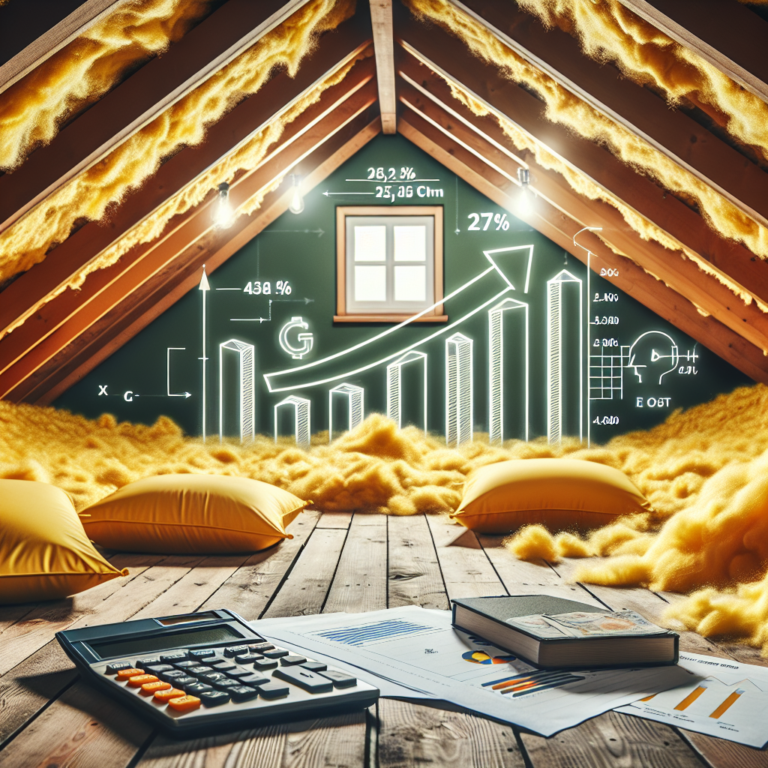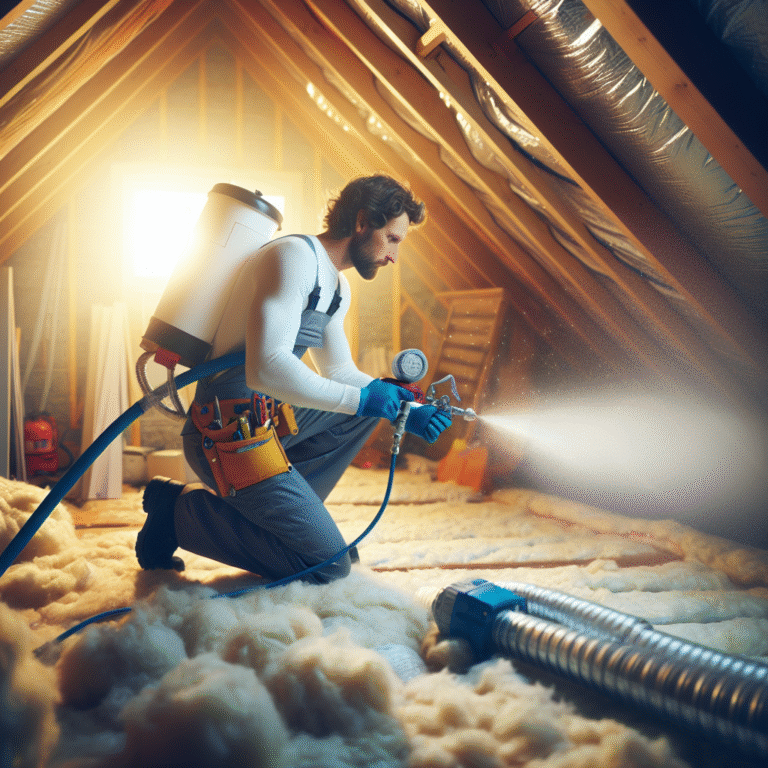-
Table of Contents
- Introduction
- Maximizing Energy Savings: The Impact of Blown-In Insulation on HVAC Efficiency in Texas Homes
- The Hidden Value of Home Insulation: How Blown-In Insulation Can Improve Your HVAC System’s Performance
- The Perfect Pair: How Combining HVAC Upgrades with Blown-In Insulation Can Save You Money on Your Texas Energy Bills
- Q&A
- Conclusion
Maximize your HVAC efficiency with blown-in insulation – the perfect pairing for a comfortable and energy-efficient home.
Maximize your HVAC efficiency and save on energy costs with blown-in insulation. Learn more about the link between the two and how Texas Insulation Solution can help improve your home’s energy efficiency. Visit texasinsulationsolution.com to schedule a consultation today.”
Introduction
The efficiency of HVAC systems is a crucial factor in maintaining comfortable and cost-effective indoor environments. However, many homeowners overlook the importance of proper insulation in achieving optimal HVAC efficiency. In this article, we will explore the link between HVAC efficiency and blown-in insulation, and how this combination can benefit both your wallet and your comfort.
Maximizing Energy Savings: The Impact of Blown-In Insulation on HVAC Efficiency in Texas Homes
As the summer heat in Texas continues to rise, homeowners are constantly looking for ways to keep their homes cool without breaking the bank. One often overlooked solution is blown-in insulation, which not only helps with temperature control but also has a direct impact on the efficiency of HVAC systems.
HVAC (Heating, Ventilation, and Air Conditioning) systems are responsible for maintaining a comfortable temperature in our homes, but they can also be a major source of energy consumption. In fact, according to the U.S. Department of Energy, heating and cooling account for nearly half of the energy used in a typical American home. This is where blown-in insulation comes in.
Blown-in insulation, also known as loose-fill insulation, is made up of small particles of materials such as fiberglass, cellulose, or mineral wool. These particles are blown into attics, walls, and other spaces using specialized equipment, creating a layer of insulation that helps to trap heat in the winter and keep it out in the summer. This added layer of insulation not only helps to regulate the temperature in your home but also has a direct impact on the efficiency of your HVAC system.
One of the main benefits of blown-in insulation is its ability to reduce the workload on your HVAC system. When your home is properly insulated, it takes less energy for your HVAC system to maintain a comfortable temperature. This means that your system doesn’t have to work as hard or run for as long, resulting in lower energy bills. In fact, the Department of Energy estimates that homeowners can save up to 20% on their heating and cooling costs by properly insulating their homes.
In addition to reducing energy consumption, blown-in insulation also helps to improve the overall efficiency of your HVAC system. When your home is properly insulated, there is less air leakage, which means that your HVAC system doesn’t have to work as hard to maintain a consistent temperature. This not only saves energy but also reduces wear and tear on your system, potentially extending its lifespan.
Furthermore, blown-in insulation can also help to improve the air quality in your home. By creating a barrier between the inside and outside of your home, it helps to prevent dust, pollen, and other allergens from entering your living space. This is especially beneficial for those with allergies or respiratory issues.
But how does blown-in insulation specifically impact HVAC efficiency in Texas homes? The answer lies in the extreme temperatures that are common in the state. In the summer, when temperatures can reach well over 100 degrees, the insulation helps to keep the cool air inside and the hot air out. This means that your HVAC system doesn’t have to work as hard to maintain a comfortable temperature, resulting in lower energy consumption and costs.
In the winter, when temperatures can drop below freezing, the insulation helps to keep the warm air inside and the cold air out. This means that your HVAC system doesn’t have to work as hard to heat your home, again resulting in energy savings. In both cases, the added layer of insulation helps to reduce the workload on your HVAC system, making it more efficient and cost-effective.
In conclusion, blown-in insulation is a simple and effective way to improve the efficiency of your HVAC system and save on energy costs. By reducing the workload on your system and creating a barrier against extreme temperatures, it not only helps to keep your home comfortable but also has a direct impact on your energy bills. So if you’re looking to maximize energy savings in your Texas home, consider investing in blown-in insulation.
The Hidden Value of Home Insulation: How Blown-In Insulation Can Improve Your HVAC System’s Performance
When it comes to home insulation, most people think of it as a way to keep their homes warm in the winter and cool in the summer. However, what many homeowners don’t realize is that proper insulation can also have a significant impact on the efficiency of their HVAC system. In fact, one of the most effective types of insulation for improving HVAC efficiency is blown-in insulation.
Blown-in insulation, also known as loose-fill insulation, is made up of small particles of materials such as fiberglass, cellulose, or mineral wool. These particles are blown into the walls, attic, or other areas of a home using a special machine. The result is a dense layer of insulation that fills in any gaps or voids, providing a more complete barrier against heat transfer.
So, how exactly does blown-in insulation improve HVAC efficiency? The answer lies in its ability to reduce air leakage and improve thermal resistance. Air leakage is a major issue in many homes, as it allows conditioned air to escape and unconditioned air to enter. This not only leads to discomfort for the occupants but also puts a strain on the HVAC system as it works harder to maintain the desired temperature.
Blown-in insulation helps to seal any gaps or cracks in the walls, floors, and ceilings, preventing air from escaping or entering. This means that the HVAC system doesn’t have to work as hard to maintain a comfortable temperature, resulting in lower energy consumption and utility bills. In fact, according to the Department of Energy, proper insulation can reduce heating and cooling costs by up to 20%.
In addition to reducing air leakage, blown-in insulation also improves thermal resistance. Thermal resistance, also known as R-value, is a measure of how well a material resists heat transfer. The higher the R-value, the better the insulation’s ability to keep heat from escaping or entering a home. Blown-in insulation has a higher R-value per inch compared to other types of insulation, making it a more effective option for improving thermal resistance.
By improving thermal resistance, blown-in insulation helps to keep the conditioned air inside the home, reducing the workload on the HVAC system. This not only leads to energy savings but also extends the lifespan of the HVAC system by reducing wear and tear. Additionally, a more efficient HVAC system means fewer repairs and maintenance, saving homeowners even more money in the long run.
Another benefit of blown-in insulation is its ability to reduce noise transmission. The dense layer of insulation acts as a sound barrier, absorbing and reducing noise from outside sources. This is especially beneficial for homes located in noisy areas or near busy roads. Not only does this lead to a more peaceful and comfortable living environment, but it also means that the HVAC system doesn’t have to work as hard to overcome external noise, further improving its efficiency.
In conclusion, blown-in insulation is a valuable investment for homeowners looking to improve the efficiency of their HVAC system. By reducing air leakage, improving thermal resistance, and reducing noise transmission, blown-in insulation can lead to significant energy savings, lower utility bills, and a more comfortable living environment. So, if you’re looking to upgrade your home’s insulation, consider blown-in insulation for its hidden value in improving HVAC efficiency.
The Perfect Pair: How Combining HVAC Upgrades with Blown-In Insulation Can Save You Money on Your Texas Energy Bills
When it comes to keeping your home comfortable and energy-efficient, there are two key components that often go hand in hand: your HVAC system and your insulation. While many homeowners may focus on upgrading their HVAC system to improve efficiency, they may not realize the significant impact that insulation can have on their energy bills. In particular, blown-in insulation has become a popular choice for homeowners looking to improve their home’s energy efficiency, and when combined with HVAC upgrades, it can lead to even greater savings.
First, let’s take a closer look at what blown-in insulation is and how it works. Blown-in insulation, also known as loose-fill insulation, is made up of small particles of materials such as fiberglass, cellulose, or mineral wool. These particles are blown into the walls, attic, or other areas of a home using a special machine, filling in any gaps or spaces and creating a barrier against heat transfer. This type of insulation is often preferred over traditional batt insulation because it can easily fill in hard-to-reach areas and provide a more complete coverage.
So, how does blown-in insulation impact the efficiency of your HVAC system? The answer lies in its ability to create a thermal barrier. By filling in gaps and spaces, blown-in insulation prevents air from escaping or entering your home, which can greatly reduce the workload on your HVAC system. In other words, your HVAC system won’t have to work as hard to maintain a comfortable temperature, leading to lower energy bills.
But the benefits of blown-in insulation don’t stop there. When combined with HVAC upgrades, the savings can be even greater. For example, if you upgrade to a more energy-efficient HVAC system, but your home is still poorly insulated, you may not see as much of a difference in your energy bills. This is because the new HVAC system is still working to compensate for the lack of insulation. However, by adding blown-in insulation, you can create a more balanced and efficient system, leading to even greater savings.
Another factor to consider is the climate in which you live. In Texas, where temperatures can reach extreme highs in the summer and lows in the winter, having a well-insulated home is crucial. Without proper insulation, your HVAC system will have to work overtime to keep up with the changing temperatures, resulting in higher energy bills. By combining HVAC upgrades with blown-in insulation, you can create a more energy-efficient home that can withstand the Texas climate without breaking the bank.
In addition to energy savings, blown-in insulation can also improve the overall comfort of your home. By creating a thermal barrier, it can help regulate the temperature and reduce drafts, making your home more comfortable year-round. This is especially beneficial for those living in older homes that may have inadequate insulation.
Furthermore, blown-in insulation can also have a positive impact on the environment. By reducing the workload on your HVAC system, you are also reducing your carbon footprint. This is because your HVAC system won’t have to use as much energy to maintain a comfortable temperature, leading to a decrease in greenhouse gas emissions.
In conclusion, the combination of HVAC upgrades and blown-in insulation is a perfect pair for homeowners looking to save money on their energy bills. By creating a thermal barrier and reducing the workload on your HVAC system, blown-in insulation can greatly improve the efficiency of your home. And when combined with HVAC upgrades, the savings can be even greater. So, if you’re looking to make your home more energy-efficient and comfortable, consider investing in blown-in insulation and upgrading your HVAC system. Your wallet and the environment will thank you.
Q&A
Q: What is the link between HVAC efficiency and blown-in insulation?
A: The link between HVAC efficiency and blown-in insulation is that blown-in insulation helps to reduce air leakage and improve insulation in a home, which in turn helps the HVAC system to work more efficiently and effectively.
Q: How does blown-in insulation improve HVAC efficiency?
A: Blown-in insulation creates a barrier that helps to prevent air from escaping or entering a home, reducing the workload on the HVAC system. This allows the system to run more efficiently and use less energy to maintain a comfortable temperature.
Q: Are there any other benefits of using blown-in insulation besides improving HVAC efficiency?
A: Yes, there are several other benefits of using blown-in insulation. It can also help to reduce noise levels, improve indoor air quality, and save on energy costs. Additionally, it is a more environmentally friendly option compared to traditional insulation materials.
Conclusion
In conclusion, there is a clear link between HVAC efficiency and blown-in insulation. By properly insulating a building, the HVAC system is able to work more efficiently and effectively, resulting in lower energy costs and a more comfortable indoor environment. Blown-in insulation is a cost-effective and easy way to improve the energy efficiency of a building, making it a valuable investment for both homeowners and businesses. It is important to consider the insulation needs of a building when evaluating HVAC efficiency and to ensure that proper insulation is in place for optimal performance.




